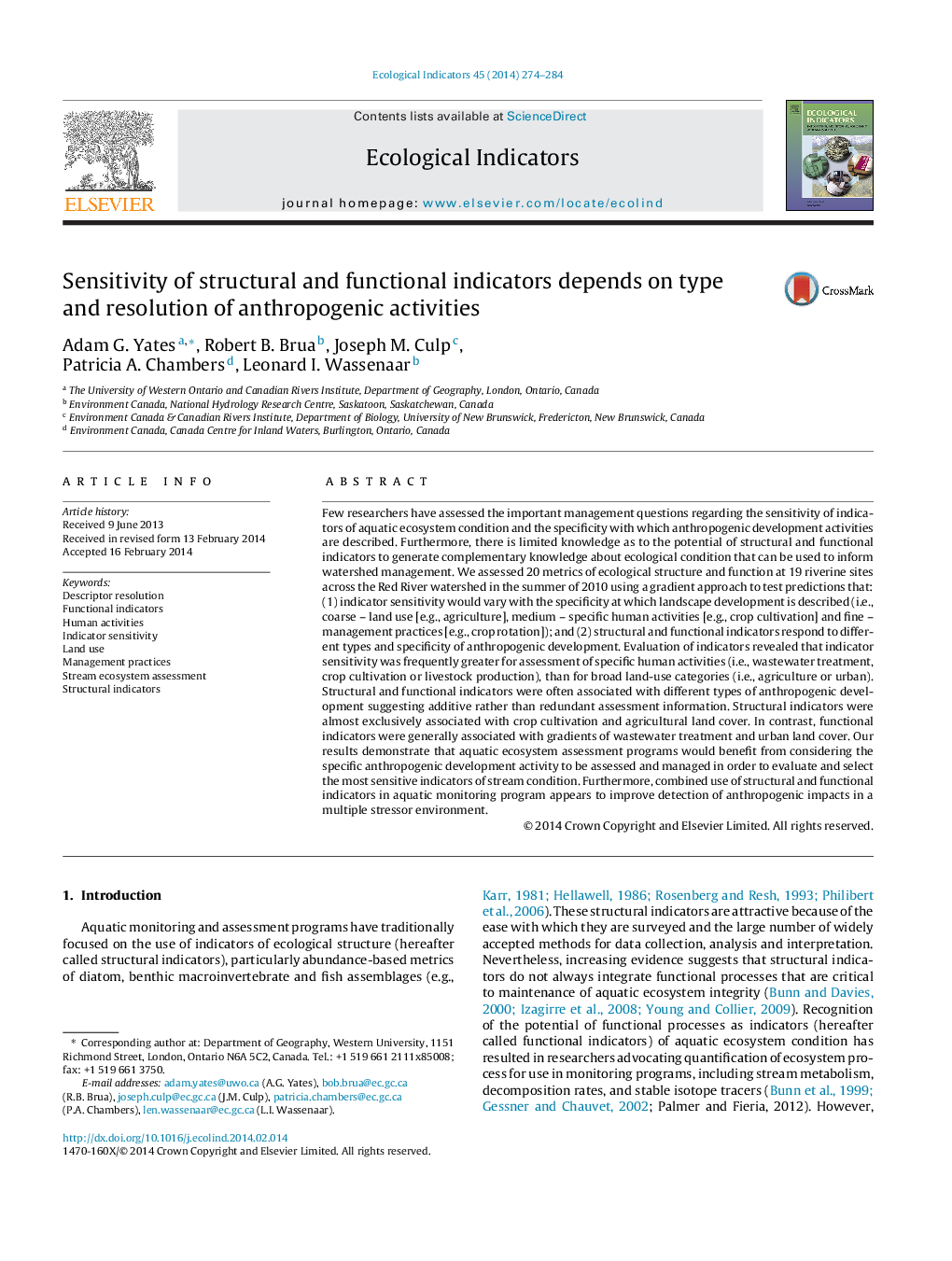| Article ID | Journal | Published Year | Pages | File Type |
|---|---|---|---|---|
| 4373067 | Ecological Indicators | 2014 | 11 Pages |
Abstract
Few researchers have assessed the important management questions regarding the sensitivity of indicators of aquatic ecosystem condition and the specificity with which anthropogenic development activities are described. Furthermore, there is limited knowledge as to the potential of structural and functional indicators to generate complementary knowledge about ecological condition that can be used to inform watershed management. We assessed 20 metrics of ecological structure and function at 19 riverine sites across the Red River watershed in the summer of 2010 using a gradient approach to test predictions that: (1) indicator sensitivity would vary with the specificity at which landscape development is described (i.e., coarse - land use [e.g., agriculture], medium - specific human activities [e.g., crop cultivation] and fine - management practices [e.g., crop rotation]); and (2) structural and functional indicators respond to different types and specificity of anthropogenic development. Evaluation of indicators revealed that indicator sensitivity was frequently greater for assessment of specific human activities (i.e., wastewater treatment, crop cultivation or livestock production), than for broad land-use categories (i.e., agriculture or urban). Structural and functional indicators were often associated with different types of anthropogenic development suggesting additive rather than redundant assessment information. Structural indicators were almost exclusively associated with crop cultivation and agricultural land cover. In contrast, functional indicators were generally associated with gradients of wastewater treatment and urban land cover. Our results demonstrate that aquatic ecosystem assessment programs would benefit from considering the specific anthropogenic development activity to be assessed and managed in order to evaluate and select the most sensitive indicators of stream condition. Furthermore, combined use of structural and functional indicators in aquatic monitoring program appears to improve detection of anthropogenic impacts in a multiple stressor environment.
Related Topics
Life Sciences
Agricultural and Biological Sciences
Ecology, Evolution, Behavior and Systematics
Authors
Adam G. Yates, Robert B. Brua, Joseph M. Culp, Patricia A. Chambers, Leonard I. Wassenaar,
